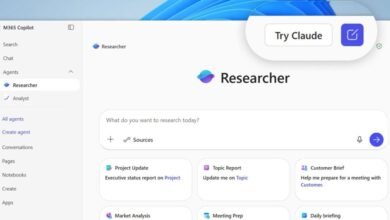Chat with Anthropic’s Claude Directly in Slack

▼ Summary
– Claude is now directly integrated into Slack, allowing users to access it through tagging or a dedicated icon for tasks like drafting messages and summarizing documents.
– The integration gives Claude permission to access a user’s workspace channels, direct messages, and shared files, but only those they have direct access to.
– Claude can reference users’ past Slack conversations via a connector in its settings, enabling it to contextualize responses and help prioritize tasks or draft emails.
– This move is part of a broader trend where AI agents are being embedded into work platforms to assist with mundane, time-consuming tasks as virtual collaborators.
– AI developers are using integrations with popular apps like Slack to make their tools more accessible and encourage widespread adoption in daily workflows.
Anthropic has launched direct integration for its Claude AI assistant within the Slack platform, allowing teams to access advanced AI capabilities without leaving their primary communication tool. This strategic move embeds Claude directly into workplace workflows, positioning it as a collaborative partner rather than just another standalone application. The integration enables users to summon Claude through simple tagging or by clicking a dedicated icon, making AI assistance immediately available during routine work conversations.
Teams using paid Slack subscriptions can now deploy Claude directly from the Slack Marketplace. Once activated, the AI can participate in private discussions or group channels when specifically mentioned using the @Claude tag. The system operates with contextual awareness, drawing from threads and documents that the user already has permission to view. This careful approach to data access means Claude only references information from channels, direct messages, and files that the initiating user can normally see.
A significant enhancement comes through Claude’s new Slack connector feature, available to Team and Enterprise tier customers. This functionality, accessible through the chatbot’s settings interface, allows Claude to reference historical Slack conversations when formulating responses. Imagine starting your Monday by asking Claude to review recent message history, identify priority tasks, and even draft follow-up emails to coordinate necessary meetings—all based on your actual workplace discussions.
This integration represents the broader industry shift toward embedding AI agents directly into workplace platforms where employees already spend their time. Rather than forcing users to switch between applications, companies are bringing intelligence directly into existing workflows. As Slack’s Chief Product Officer Rob Seaman noted, this partnership accelerates the transition toward “agentic enterprises” where AI and human workers operate in tandem within natural work environments.
The convenience factor cannot be overstated when examining adoption patterns. While dedicated users might download standalone applications or bookmark specific websites, the barrier to usage drops significantly when AI becomes accessible through a simple tag in an already-open application. This frictionless access likely explains why Anthropic has been aggressively expanding Claude’s presence across popular platforms including Stripe, Canva, and Asana through its growing directory of third-party connectors.
Slack itself has been deepening its AI investments, having recently introduced a collection of productivity-enhancing features for its premium plans. The platform’s embrace of AI capabilities reflects the competitive landscape where collaboration tools are increasingly expected to provide intelligent assistance alongside basic communication functions.
Similar integration strategies are appearing across the AI ecosystem, with companies like Perplexity recently launching email assistants that connect directly to Gmail and Microsoft Outlook. These developments signal a maturation in the AI market where accessibility and seamless integration are becoming just as important as raw technical capability.
(Source: ZDNET)





